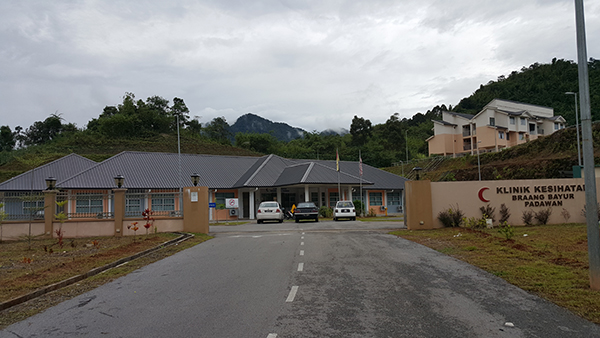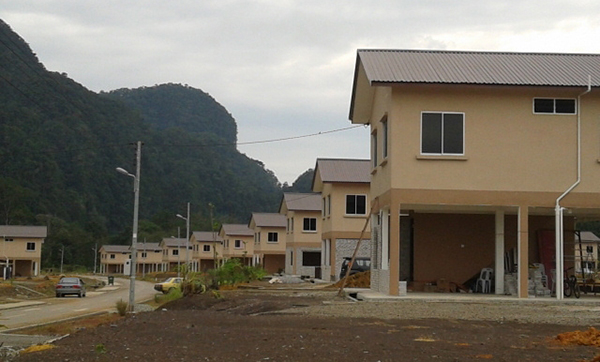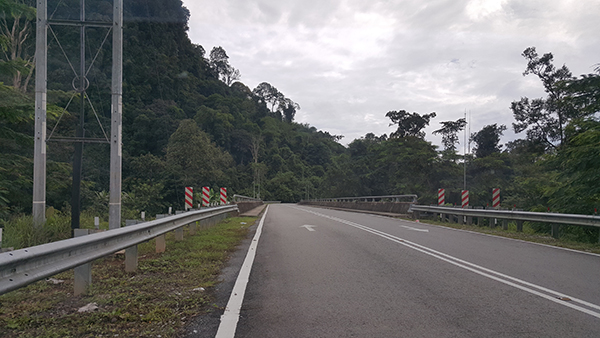
The Bayur Health Clinic.
IDEALLY, residents should be able to conveniently and confidently use services such as primary care, dental, behavioral health, emergency and public health services.
It is commonsense that access to healthcare service is important for overall physical, social, and mental health status; prevention of disease; detection and treatment of illnesses to enhance the quality of life.
More often than not, rural residents experience barriers to healthcare that limit their ability to get the care they need.
For rural residents to have sufficient healthcare access, necessary and appropriate services which can be accessed in a timely manner, must be available.
In addition to having adequate supply of healthcare services in the community, there are other factors which play a significant role in healthcare access.
For instance, to have good healthcare access, a rural resident must also have the means, such as transportation, to get to the health services which may be located at a distance.
Although it is never easy to meet the people’s expectations, the government has been steadily increasing efforts to improve its public health sector in the rural areas.
Padawan is one area that has benefited from the government’s effort to enhance healthcare in ‘disadvantaged’ areas. Although there is still room for improvement, especially in terms of treatment options, a new clinic in one such area is providing some modern healthcare.
For now, the clinic — known as Bayur Health Clinic — has three medical doctors and four medical assistants to take care of outpatients from the surrounding areas.
The clinic also provides triage and treatment, laboratory, pharmacy, and mother and children’s healthcare, among others.
Access to specialists is still limited though, and patients are referred to the Sarawak General Hospital for treatment of more chronic conditions.
The RM33 million Bayur Health Clinic is located at the budding Padawan Rural Growth Centre (RGC) at Kampung Bayur, about 40km from Kuching.
Residents in the area have Dr Jerip Susil to thank for this much-needed healthcare facility. The Assistant Public Health Minister and Bengoh (now Mambong) state assemblyman had been pushing for its implementation at the Padawan RGC.

The Rumah Mesra Rakyat at the BRS.
White elephant
Despite the existence of an earlier health clinic there, the residents still see the fledging Padawan RGC as a ‘white elephant’ with seemingly no further progress to speak of.
Aside from the health clinic and staff quarters, the only other building is a sub-district office. The rest of the compound, especially the land allocated for the commercial centre, is overgrown with tall grass.
Most residents are wondering whether or not the Padawan RGC will become a reality. The local community has actually been looking forward to the development of the commercial centre and other supporting facilities at the RGC which they believe can boost rural development and rural economy.
It is believed Dr Jerip had over the past 10 years been asking the relevant government agencies to come up with a concrete plan and timeframe on developing the commercial centre but to no avail.
For the area to prevail as an RGC, the commercial centre is crucial to providing the locals with an avenue to set up their businesses.
Other basic infrastructure such as roads, electricity and water supply are, however, already in place.
The Padawan RGC, if fully operational, can turn the area into a thriving township, given its strategic location, to serve the people from both Upper Padawan and Upper Jalan Penrissen.
About 10km from the Bayur Health Clinic is a modern resettlement under the Bengoh Resettlement Scheme (BRS) which is probably the best of its kind in Sarawak so far.
The BRS has been modified and corrected to suit the current trends.
The issues of human rights, human dignity and risks exposure too have been looked into in greater depth and width.
Situated about 5km from Kampung Semadang and 42km from Kuching, the BRS is specifically designed upon the consultation and agreement with the villagers.
Covering a total area about 1,000 acres – 300 acres for residential area comprising 204 houses, one Anglican Church, one SIB Chapel and four community halls (one hall for every village) and 700 acres of land for agriculture, the scheme is washed by Sungai Raden, a tributary of Sungai Semadang or Sarawak Kiri River.
The Rumah Mesra Rakyat project in the area, costing about RM192 million, was completed in December 2013.
The BRS was built to cater for residents from Kampung Semban Teleg, Kampung Rejoi, Kampung Pain Bojong and Kampung Taba Sait who were evacuated to give way to the implementation of the Bengoh Reservoir Dam.
Each family has been allocated a detached concrete stilt house on 25 points or a quarter acre of land. Each unit has three bedrooms, a kitchen and two washrooms. Some families have walled up the ground floor to extend their house.
The residential area is also provided with standard amenities such as treated water and 24-hour electricity supply.

A section of the Semadang-Skio road.
Better living standards
The interesting feature about the BRS is that the four villages there have maintained their original identities and names.
But more than anything else, the new settlements within the scheme have provided significantly better living standards for the villagers than before the dam project.
Through the basic facilities and infrastructure available at BRS, the residents have started to experience a change in their lives for the better.
Regardless of all sorts of criticisms, the BRS will help bridge the digital divide and improve the living standards of the affected villagers.
This new resettlement with concomitant new lifestyles and challenges for the villagers is a result of the Bengoh Dam project.
Although it came under heavy fire in the initial stage, the policy-makers defended the project, insisting the dam was important and would benefit not just the people but also industries in Kuching and Samarahan. They argued as the population and industries continued to grow, the demand for clean water would also increase.
For now, the dam will serve as a reservoir, supplying raw water to the Kuching Water Board water treatment plant at Batu Kitang during the dry season when the river is too low to meet the needs of the people and industries in Kuching and Samarahan Divisions.
Construction started in 2007 at a site 40km south of the state capital and about 2km from Kampung Bengoh.
A lake covering a surface area of about 10 sq km, will be created with the impoundment of the dam expected this year.
The dam reservoir is able to store some 144 million cubic metres of water for Kuching city and Samarahan until 2030. The Bengoh Dam is the second in Malaysia built with the roller compacted concrete technology. The ancillary projects have also connected Penrissen Jalan Puncak and Bau via the Semadang-Skio Road, built as an access road to the BRS.
The 13km road, costing RM7.3 million, was completed in 2013. These are the major developments that have taken within Bengoh (now Mambong) state constituency over the past five years.
Above everything else, the water woes faced by the villagers living along Jalan Puncak Borneo, have been resolved. Now, almost all the kampungs – Punau, Bunuk, Giam, Garung, Karu, Semadang and Danu – along Semadang-Skio Road have treated water supply.
Houses along Jalan Puncak Borneo from Kampung Punau upwards, yet to enjoy treated water supply, will soon be provided with the amenity following to the completion of the RM1.5 million subline pipe laying project from Punau to Garung.
According to Dr Jerip, it is now a matter of implementation since all the applications are now with Public Works Department (JKR) divisional office.
